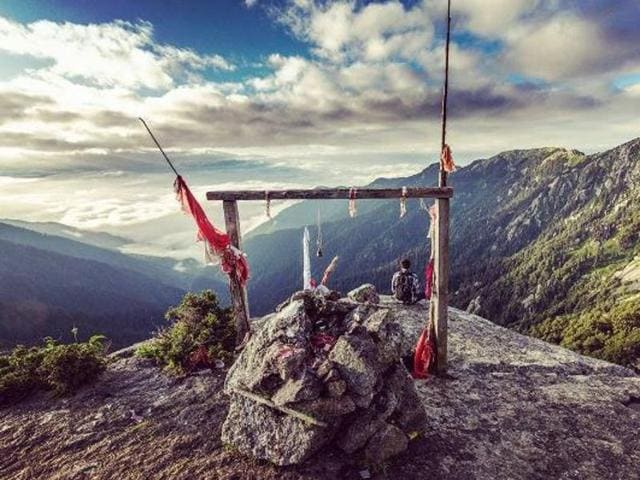Hills calling: An expert guide to trek right around Shimla this summer
The heat in the plains is making headlines for all the wrong reasons. At a time when even AC and chilled drinks are failing to provide long-term relief, a trek in the hills seems like the ideal escape. And to do it right, all you need to do is pack ‘Easy Trails Around Shimla’ by writer-historian Raaja Bhasin in your backpack.
Book: Easy Trails Around Shimla

Author: Raaja Bhasin
Publisher: Rupa & Co
Pages: 118
Price: Rs.195
The heat in the plains is making headlines for all the wrong reasons. At a time when even AC and chilled drinks are failing to provide long-term relief, a trek in the hills seems like the ideal escape. And to do it right, all you need to do is pack ‘Easy Trails Around Shimla’ by writer-historian Raaja Bhasin in your backpack.
Tracking the hikes dotted around the periphery of Shimla, situated at an altitude of 2,130 metres, Bhasin traces the various paths, including the Mashobra spur and the overnight trail to the Shali ‘tibba’, which can test one’s level of fitness.
And, of course, more than a reasonable level of interest in the hills too.
The 118-page book covers walks on the Tara Devi hill, the water catchment sanctuary — which is coated with Himalayan cedars — to Mashobra and further the Churat Stream, the trail to the Shali tibba as well as a three-day walk along the Unesco-listed Shimla-Kalka rail line.

Well-researched and interspersed with eye-pleasing photographs of sites along the way, as well as helpful tips, the writer, who was brought up in Shimla, says the villages located on the outskirts of Shimla still hold on to a pastoral way of life.
Fortunately, much of the old architecture of wood and stone with slate roofs still remains and has not completely given way to concrete blocks.
“Hikes and treks remain the best way of seeing, experiencing and sharing this place. And, yes, as far as I know, walking hasn’t killed anyone,” Bhasin says.
Tracing the history of the ‘catchment area’ trail, he says that in the 1870s, the thick woods of what came to be known as the ‘catchment area’ were leased from the ruler of Koti for Rs.2,250 a year.
Read: Machu Picchu named most popular landmark in new TripAdvisor ranking
Work to tap the springs and streams in these woods began and iron pipes were placed below them. By 1883, the masonry work was also complete and large water tanks and reservoirs were ready. The same year, a steam engine had been commissioned at Churat. By the early 1890s, the little villages within this area had been relocated and detailed working plans (which were modified over the years) had been drawn up.
It stands testimony to the quality of workmanship and engineering that the systems are functioning well after all this time.
Wildflowers, ferns and a host of assorted herbs line the trails. The writer has described in detail the flora in and around Shimla.
The whitish dry fungi-looking organism with twisted intricate designs on rocks and on branches, especially the fallen ones, are the lichens. This is a composite organism that has a relationship of mutual survival between a fungus and partner for photosynthesis.

The lichens can survive in minimal moisture and are an excellent index of air quality as they are highly sensitive to pollutants.
Locally called ‘shila-pushp’ or rock-flower in Sanskrit, these are used in Ayurvedic medicines, as food additives and in traditional Indian perfumes.
The variety of ferns in and around Shimla is also enormous, says the book, and there are some two dozen general and around 124 species — and many grow along the walk trails.
A type of bracken, brake-fern is used as a popular local dish. Called lingru or lungru, this is plucked before the fronds open and may be sauteed or cooked in yogurt. The plant is also pickled.
This is the author’s 12th book, including “Explore Himachal on the Road” which got the national tourism award as the best tourism publication for 2014-15.
Vishal Gulati for IANS
Follow @htlifeandstyle for more



